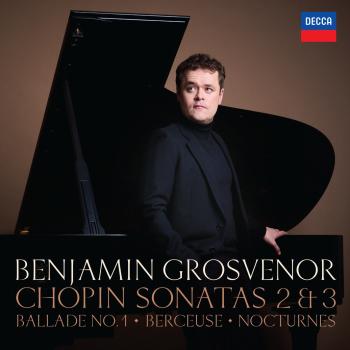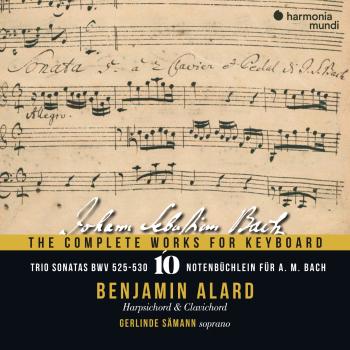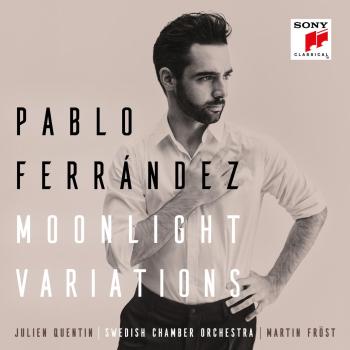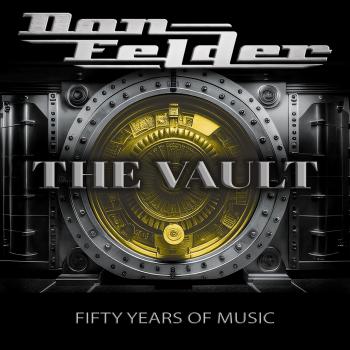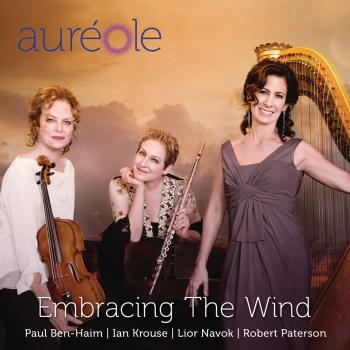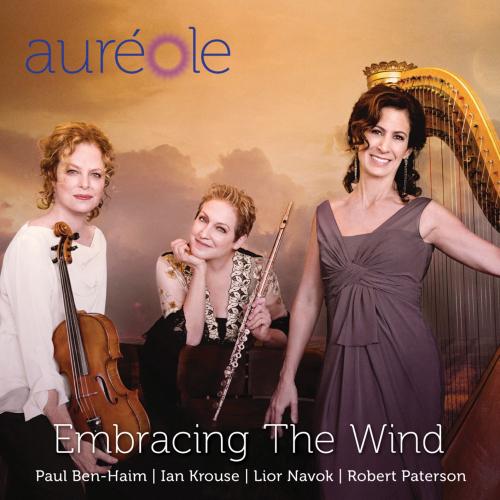
Embracing the Wind Auréole Trio
Album info
Album-Release:
2018
HRA-Release:
16.11.2018
Label: American Modern Recordings
Genre: Classical
Subgenre: Chamber Music
Artist: Auréole Trio
Composer: Paul Ben-Haim
Album including Album cover Booklet (PDF)
- Paul Ben-Haim (1897 - 1984): Chamber Music:
- 1 Chamber Music: I. Pastorale 02:49
- 2 Chamber Music: II. Burlesque 01:45
- 3 Chamber Music: III. Melody 03:18
- Robert Paterson: Embracing the Wind:
- 4 Embracing the Wind 10:49
- Lior Navok (b. 1971): Veiled Echoes:
- 5 Veiled Echoes: I. Dolente, con nostalgia 03:44
- 6 Veiled Echoes: II. Sognando 03:39
- 7 Veiled Echoes: III. Vivace 06:02
- Ian Krouse (b. 1956): Thamar y Amnón, Op. 29a:
- 8 Thamar y Amnón, Op. 29a 12:08
Info for Embracing the Wind
Auréole is widely considered to be one of the world’s most revered flute, viola, and harp trios. The trio has commissioned and premiered more works and released more albums for their instrumentation than any other similar trio in the world. Embracing The Wind is Auréole’s fifteenth album, and their debut recording on the AMR label.
The first work on the album, by Israeli composer Paul Ben-Haim, fittingly titled Chamber Music, is regarded as one of his most intimate in instrumentation and content. It explores a colorful dialogue between the three instruments that moves from playful to meditative and prayerlike. It was composed in 1978 and is, as was Debussy’s cornerstone Sonate for the same combination, one of Ben-Haim’s last works before his death in 1984. Chamber Music was commissioned by the New York-based Criterion Foundation.
The title work on the album, Embracing The Wind, is by award-winning American composer Robert Paterson and is one of his most-performed works. This work is inspired by the image of an Olympic athlete running against the wind. In Paterson’s words, he “wanted to create music that sounds flexible and has wind-like, ebb-and-flow qualities. To achieve this, he “created musical zephyrs from repeated motives and smooth phrases that utilize gradual dynamic swells and subtle tempo fluctuations.” According to Paterson, his “muse” ensemble when composing this work was Auréole, so he is thrilled to be included on this album.
The third piece on the album is the three-movement work Veiled Echoes by Lior Navok. In the composer’s words, Veiled Echoes “was written during a one month stay at Aspen, Colorado. While being surrounded by wild nature at its best, writing a trio for flute, viola and harp seemed to me as the most natural thing—as unification between music and the mountains, the woods and the rivers. Because of these external influences, as well as the trio’s delicate instrumentation, Veiled Echoes is in most of the cases airy and with delicate texture. In many places, the rhythm of the piece tends to be flexible, just like a leaf carried by the wind.”
The final work on the album, Thamar y Amnon by Ian Krouse, is a chamber tone poem based on one of Federico García Lorca’s Tres Romances Historicos (Three Historical Ballads) from Romancero Gitano (Gypsy Ballads). This work is embedded with deep, extra-musical meaning and has deep ties to Lorca’s paean to illicit eroticism. Krouse wrote, “Not only the form and musical content are derived from the poem, but even the instrumentation itself. The nervous athleticism and complexity of the flute melodies embody Amnon’s tortured struggles with lust, while Tamar’s thinly veiled seductiveness is given a lyrical outlet through the potent vehicle of the viola. The role of the harp is significantly more complex…”
Auréole
Auréole
the world-renowned chamber ensemble, has been delighting audiences with imaginative and ground-breaking programs for over 25 years. The sound of flute, viola, and harp conjures a landscape that can encompass the stillness and quiet of an impressionist sunset, and the wild abandon of a folk dance. It brings together the three essential timbres of an orchestra—wind, string and percussion— into a uniquely colorful and versatile chamber music ensemble.
The touchstone of Aureole’s repertoire is Claude Debussy’s enormously influential Sonate (1916), in which the composer imagined an entire universe of new sounds. The work has since inspired many composers to create new repertoire for flute, viola and harp. Aureole has been a key player in this process, commissioning well over 100 pieces that range from renaissance and baroque transcriptions to works by some of todays most gifted composers. Aureole is also passionate about pushing beyond traditional boundaries of classical music, and it has performed and recorded albums of The Beatles, Celtic, Latin and World music.
These consummate musicians, flutist Laura Gilbert, violist Mary Hammann, and harpist Stacey Shames, have a passionate desire to bring their remarkable repertoire—much of which they had a role in creating—to listeners throughout the world. With fourteen recordings in its discography, Aureole is the most widely recorded and best-known trio of its kind. Their yearly tours are a favorite of chamber music audiences, who have come to love and appreciate their dynamic artistry.
Booklet for Embracing the Wind

